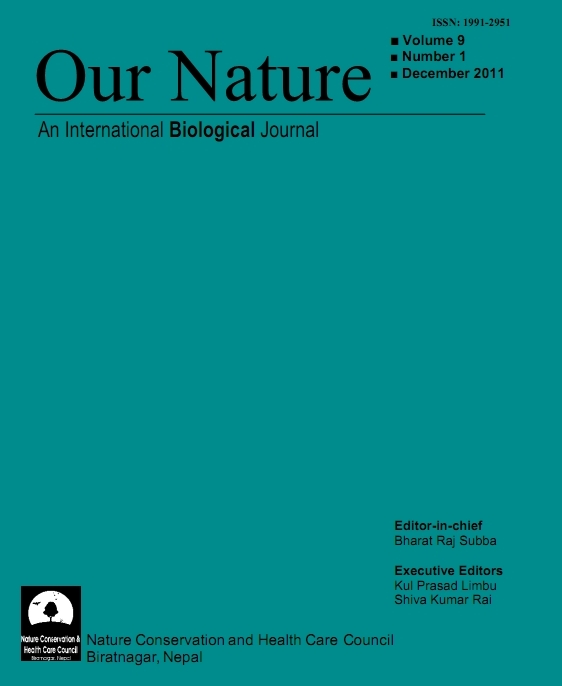Epibiont Infestation on Horseshoe Crab Tachypleus gigas (Müller) at Pantai Balok in Peninsular Malaysia
DOI:
https://doi.org/10.3126/on.v9i1.5725Keywords:
Horseshoe crab, Tachypleus gigas, epibiont, Peninsular MalaysiaAbstract
A one year study was conducted at Pantai Balok in the east coast of Peninsular Malaysia to investigate the epibiont infestation on horseshoe crab Tachypleus gigas. Number of horseshoe crabs landed was enumerated and each prosoma size (prosoma length and width) was measured. Prosoma width of the horseshoe crabs was used as a morphometric proxy to estimate the approximate age and instar stage of the individual crabs. All horseshoe crabs examined were adult individuals. The carapaces of horseshoe crabs were carefully examined for epibiont infestation. The epibiont was identified to genus level. In this study, acorn barnacle Balanus, pedunculate barnacle Octolasmis, conical slipper shells Calyptraea and flat slipper shells Crepidula were found on the carapaces of horseshoe crab Tachypleus gigas collected from Pantai Balok.
Downloads
1113
1001




